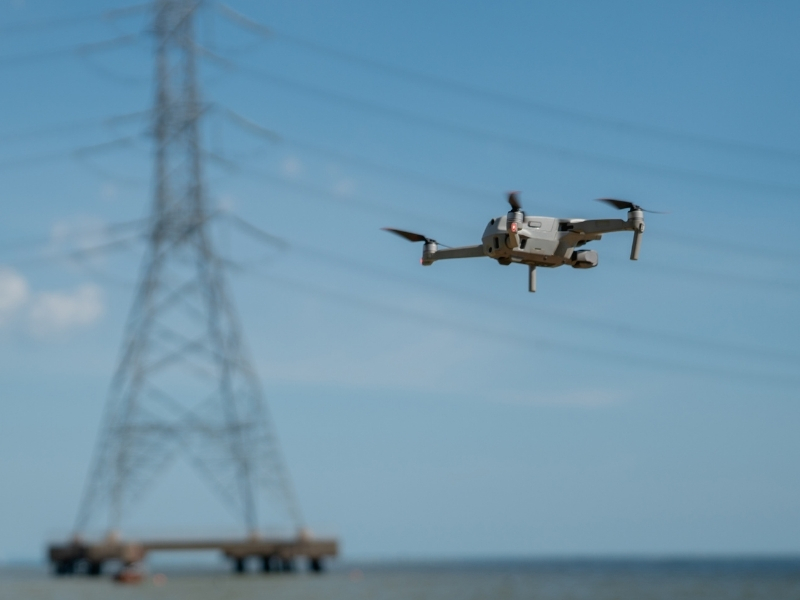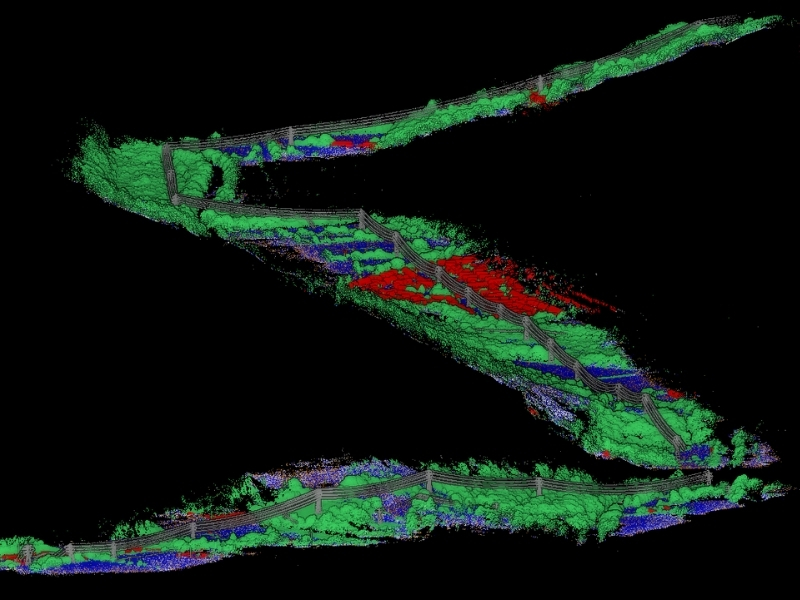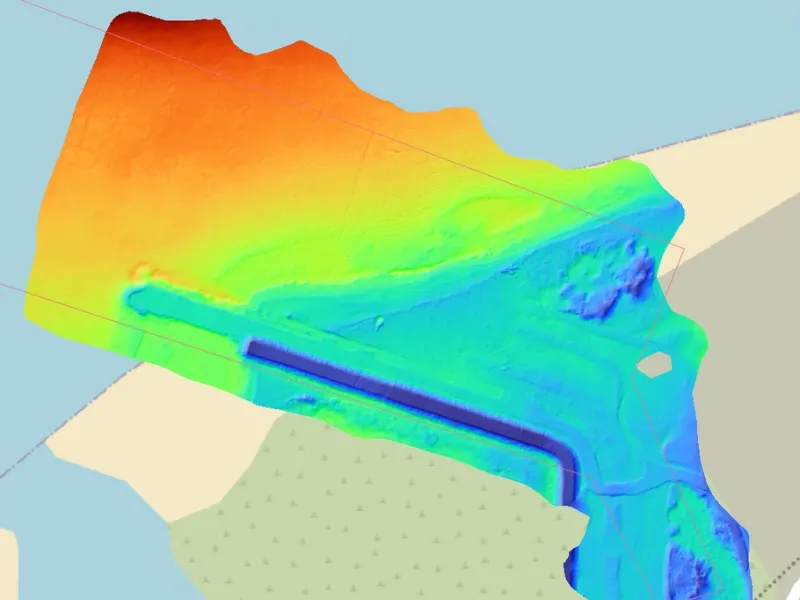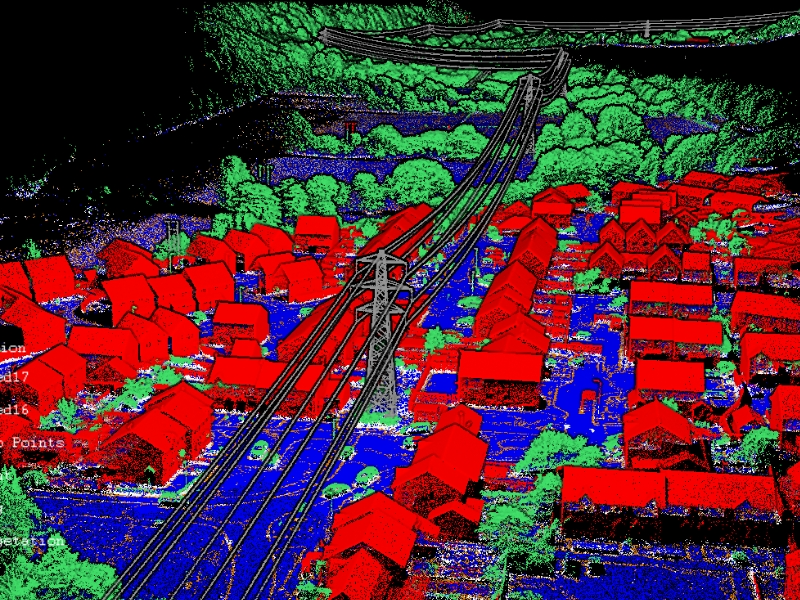
The UK's national infrastructure – from rail networks and utilities to communication systems and roads – requires continuous monitoring and maintenance to ensure safety and operational efficiency. Traditional inspection methods often involve significant risks, operational disruption and substantial costs. Vantage UAV's advanced drone technology provides the solution. Our services deliver speed and efficiency for detailed asset inspections while eliminating access challenges and reducing risk.




Drone-enabled surveys monitor critical assets across the entire water cycle. Treatment facility inspections provide detailed assessments of water treatment plants, including tank conditions, pipe networks and facility structures using high-resolution imagery and thermal analysis.
Advanced bathymetric LiDAR technology inspects shorelines, river erosion, lakes, reservoirs and buried/subsea pipelines using green laser mapping to identify structural defects including corrosion, cracks, deformations and blockages while generating accurate 3D point cloud data for comprehensive integrity management.
Pipeline corridor mapping monitors extensive water transmission routes, identifying potential issues, encroachment and environmental impacts. Thermal imaging analyses heat transfer from underground pipes, revealing pipe locations through temperature differential analysis.
Our specialised caged drones enable safe inspections of confined spaces including tunnels, culverts, under bridges, inside tanks and wind turbines, conducting high-definition visual inspections and LiDAR scanning to detect structural defects, assess sediment buildup and provide approximate pipe dimensions.


Power station inspections utilise thermal imaging to assess cooling towers, turbine halls, switchyards and auxiliary buildings, identifying efficiency issues and maintenance priorities without operational disruption. Advanced thermal analysis reveals electrical hotspots, insulation failures and equipment inefficiencies that could impact performance or safety.
Transmission line monitoring and mapping provides detailed inspection data for overhead power lines, pylons and substations, identifying conductor wear, insulator damage and structural issues affecting power transmission reliability. Aerial corridor mapping can cover around 10km to 15km per day, delivering significantly greater efficiency than traditional inspection methods while capturing comprehensive data in multiple formats.
Gas infrastructure analysis monitors processing facilities, storage tanks and distribution networks to ensure safety compliance and operational efficiency. This integrated approach enables energy operators to maintain reliable service delivery, meet regulatory requirements and implement predictive maintenance strategies that reduce operational costs and service interruptions across their entire infrastructure portfolio.




Drone-enabled surveys monitor critical assets across the entire water cycle. Treatment facility inspections provide detailed assessments of water treatment plants, including tank conditions, pipe networks and facility structures using high-resolution imagery and thermal analysis.
Advanced bathymetric LiDAR technology inspects shorelines, river erosion, lakes, reservoirs and buried/subsea pipelines using green laser mapping to identify structural defects including corrosion, cracks, deformations and blockages while generating accurate 3D point cloud data for comprehensive integrity management.
Pipeline corridor mapping monitors extensive water transmission routes, identifying potential issues, encroachment and environmental impacts. Thermal imaging analyses heat transfer from underground pipes, revealing pipe locations through temperature differential analysis.
Our specialised caged drones enable safe inspections of confined spaces including tunnels, culverts, under bridges, inside tanks and wind turbines, conducting high-definition visual inspections and LiDAR scanning to detect structural defects, assess sediment buildup and provide approximate pipe dimensions.

Power station inspections utilise thermal imaging to assess cooling towers, turbine halls, switchyards and auxiliary buildings, identifying efficiency issues and maintenance priorities without operational disruption. Advanced thermal analysis reveals electrical hotspots, insulation failures and equipment inefficiencies that could impact performance or safety.
Transmission line monitoring and mapping provides detailed inspection data for overhead power lines, pylons and substations, identifying conductor wear, insulator damage and structural issues affecting power transmission reliability. Aerial corridor mapping can cover around 10km to 15km per day, delivering significantly greater efficiency than traditional inspection methods while capturing comprehensive data in multiple formats.
Gas infrastructure analysis monitors processing facilities, storage tanks and distribution networks to ensure safety compliance and operational efficiency. This integrated approach enables energy operators to maintain reliable service delivery, meet regulatory requirements and implement predictive maintenance strategies that reduce operational costs and service interruptions across their entire infrastructure portfolio.


Drone-enabled surveys monitor critical assets across the entire water cycle. Treatment facility inspections provide detailed assessments of water treatment plants, including tank conditions, pipe networks and facility structures using high-resolution imagery and thermal analysis.
Advanced bathymetric LiDAR technology inspects shorelines, river erosion, lakes, reservoirs and buried/subsea pipelines using green laser mapping to identify structural defects including corrosion, cracks, deformations and blockages while generating accurate 3D point cloud data for comprehensive integrity management.
Pipeline corridor mapping monitors extensive water transmission routes, identifying potential issues, encroachment and environmental impacts. Thermal imaging analyses heat transfer from underground pipes, revealing pipe locations through temperature differential analysis.
Our specialised caged drones enable safe inspections of confined spaces including tunnels, culverts, under bridges, inside tanks and wind turbines, conducting high-definition visual inspections and LiDAR scanning to detect structural defects, assess sediment buildup and provide approximate pipe dimensions.


We're here to answer any questions you may have.